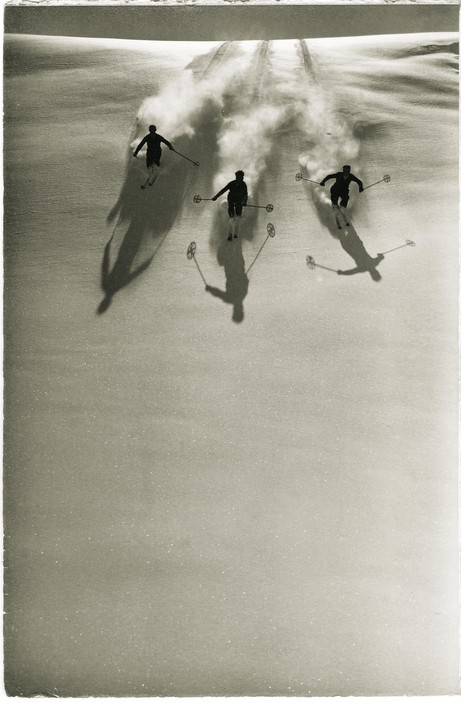Pionieers of Skiing Photography
Emanuel Gyger, Arnold Klopfenstein
The exhibition is the first ever to pay tribute to the most important pioneering œuvre in skiing photography. Swiss photographers Emanuel Gyger (1886–1951) and Arnold Klopfenstein (1896–1961) were masters at directing the interplay of light and shadow and using back lighting to dramatic effect. They perfected techniques for capturing dynamic movements and bringing them to life in still photos. Their unique style was due in part to the fact that Gyger was blind in one eye: as if through a camera’s viewfinder, he always saw the world in two dimensions.
In the Bernese Oberland, far away from centres of photography and winter sports, the duo created icons of the early free ride movement. Skiing in the 1920s and 30s was a sense of vitality, a frame of mind, an expression of individuality and self-fulfilment, the very zeitgeist epitomized by the thrill of speed, the elegance of body control, and technical precision.
It is this, which the meticulously compiled selection of photographs from the Müller-Jentsch Collection now highlights in a salon exhibition – and, too, the aesthetic qualities of early black-and-white photography.
Sammlung Müller-Jentsch
1.10. – 1.11.2020
Location
Sammlung Müller-JentschNollendorfstraße 35
10777 Berlin - Schöneberg
T 030-2792650
Tue-Sun 14-19 h
Public transport
U1/U2/U3/U4, Bahnhof Nollendorfplatz
Admission price
Admission € 5, Reduced admission € 3
Curators
Daniel Müller-JentschPartners
Beat Hächler, Alpines Museum der Schweiz, Schweizerische Botschaft in der Bundesrepublik DeutschlandCatalog
Emanuel Gyger, Arnold Klopfenstein: Pioniere der Skifotografie, Regenbrecht Verlag, Berlin 2020, 29€
